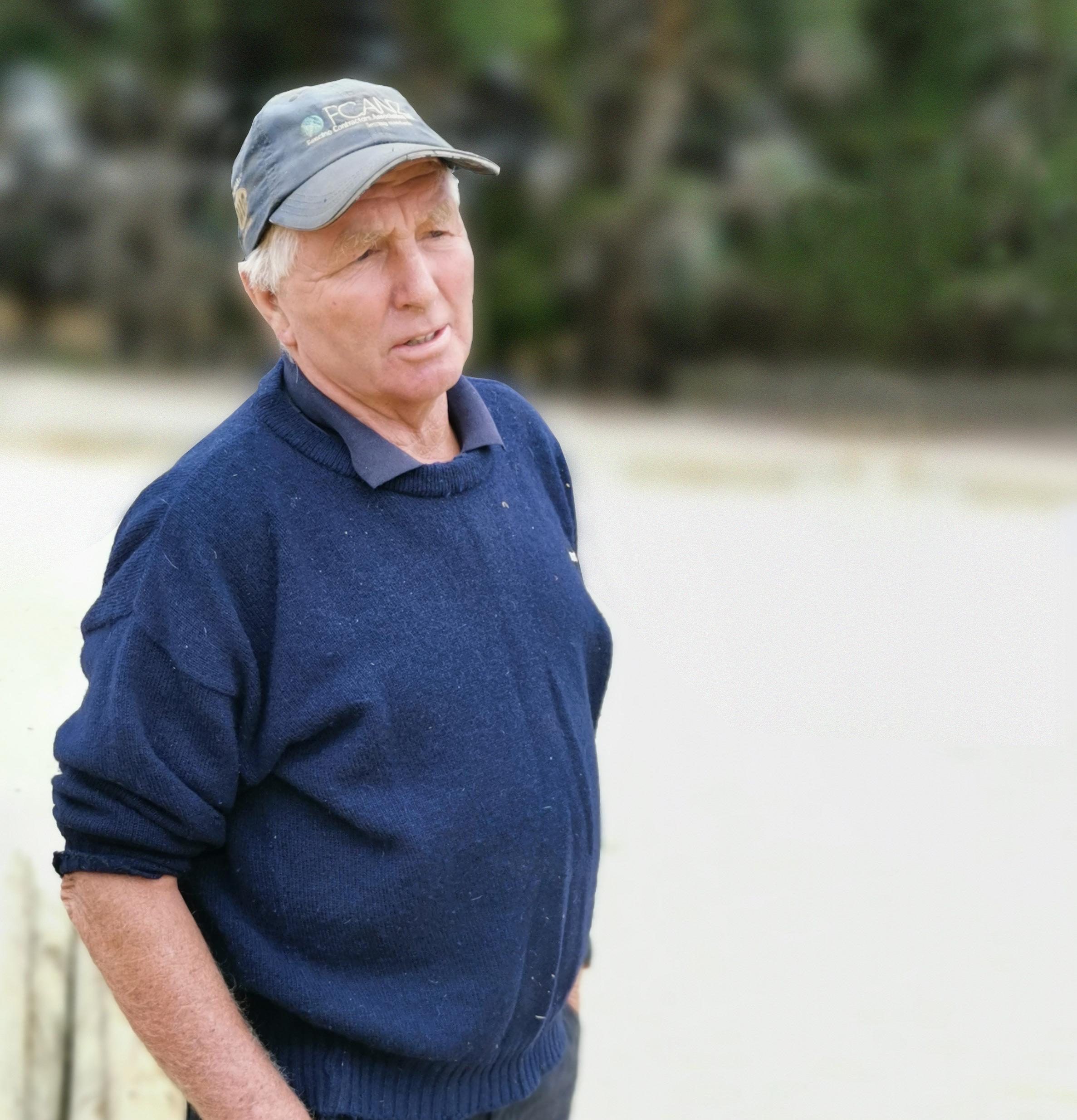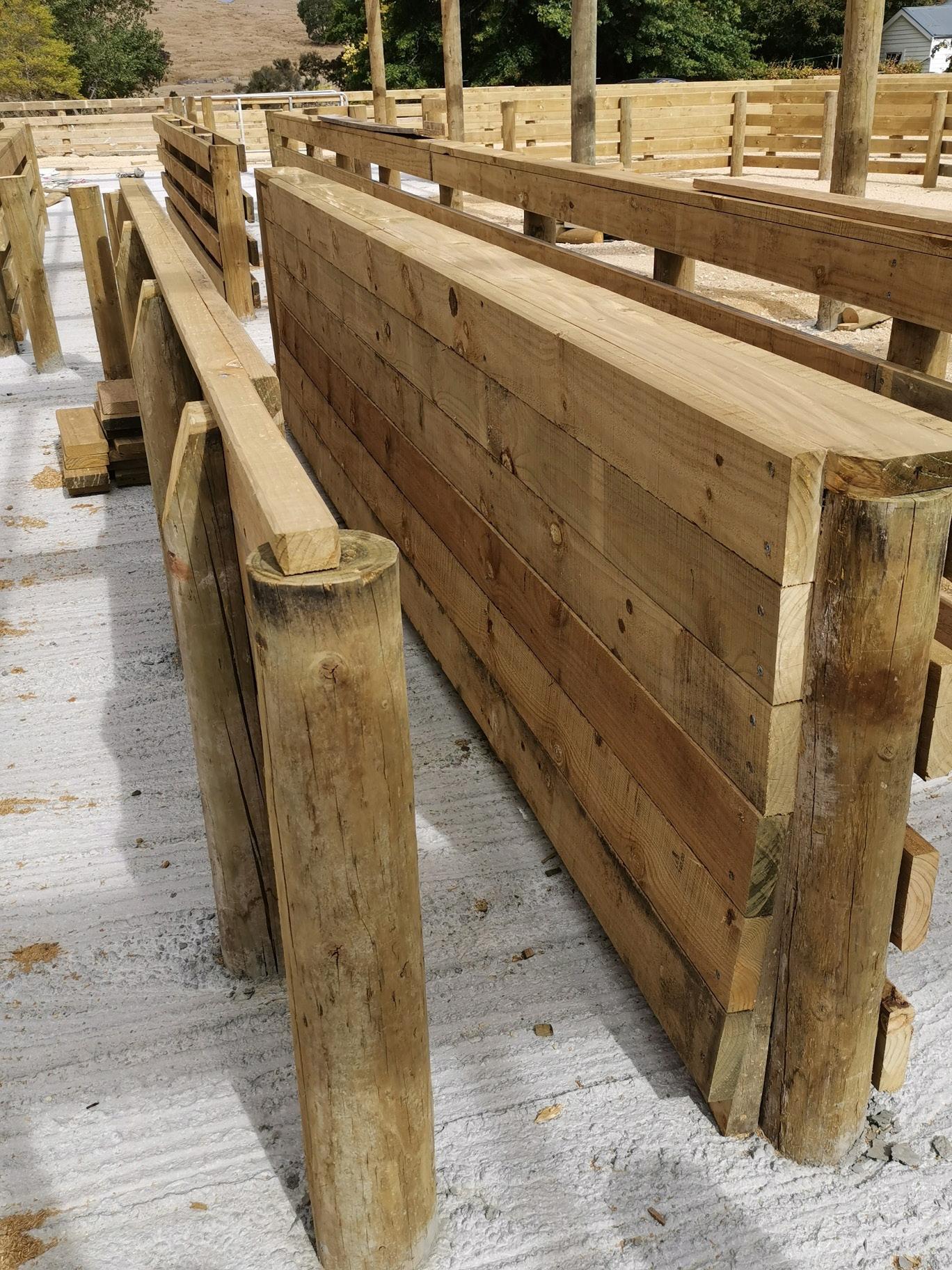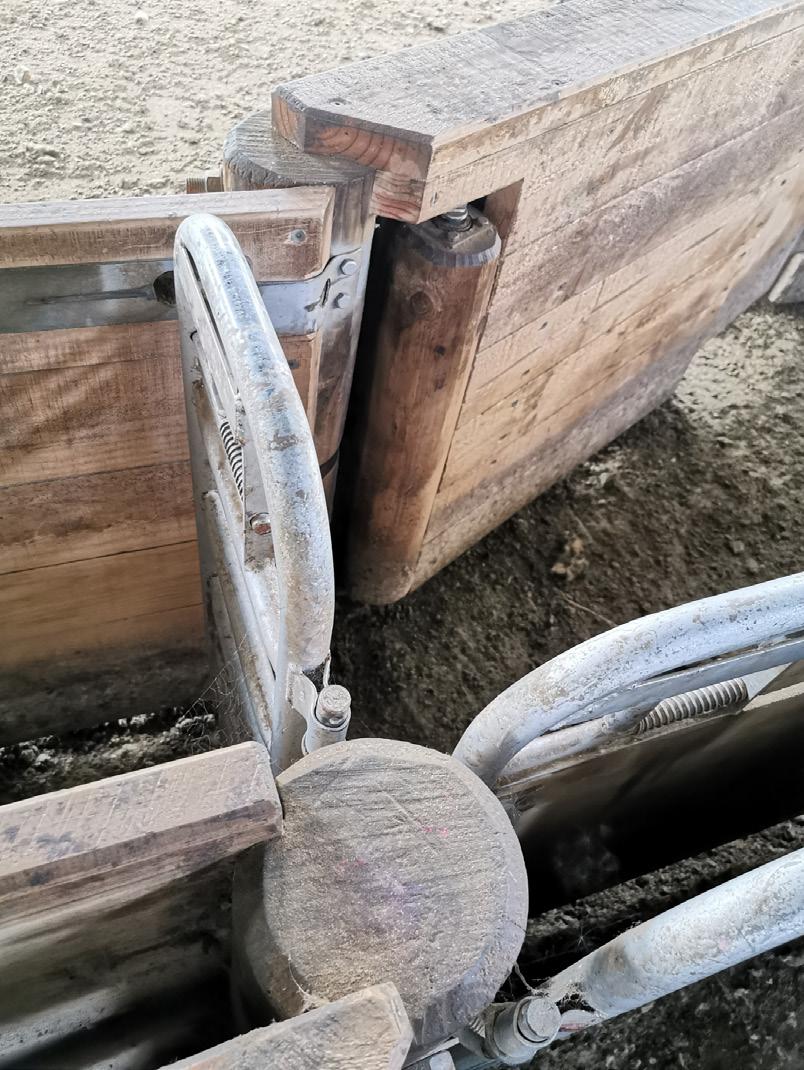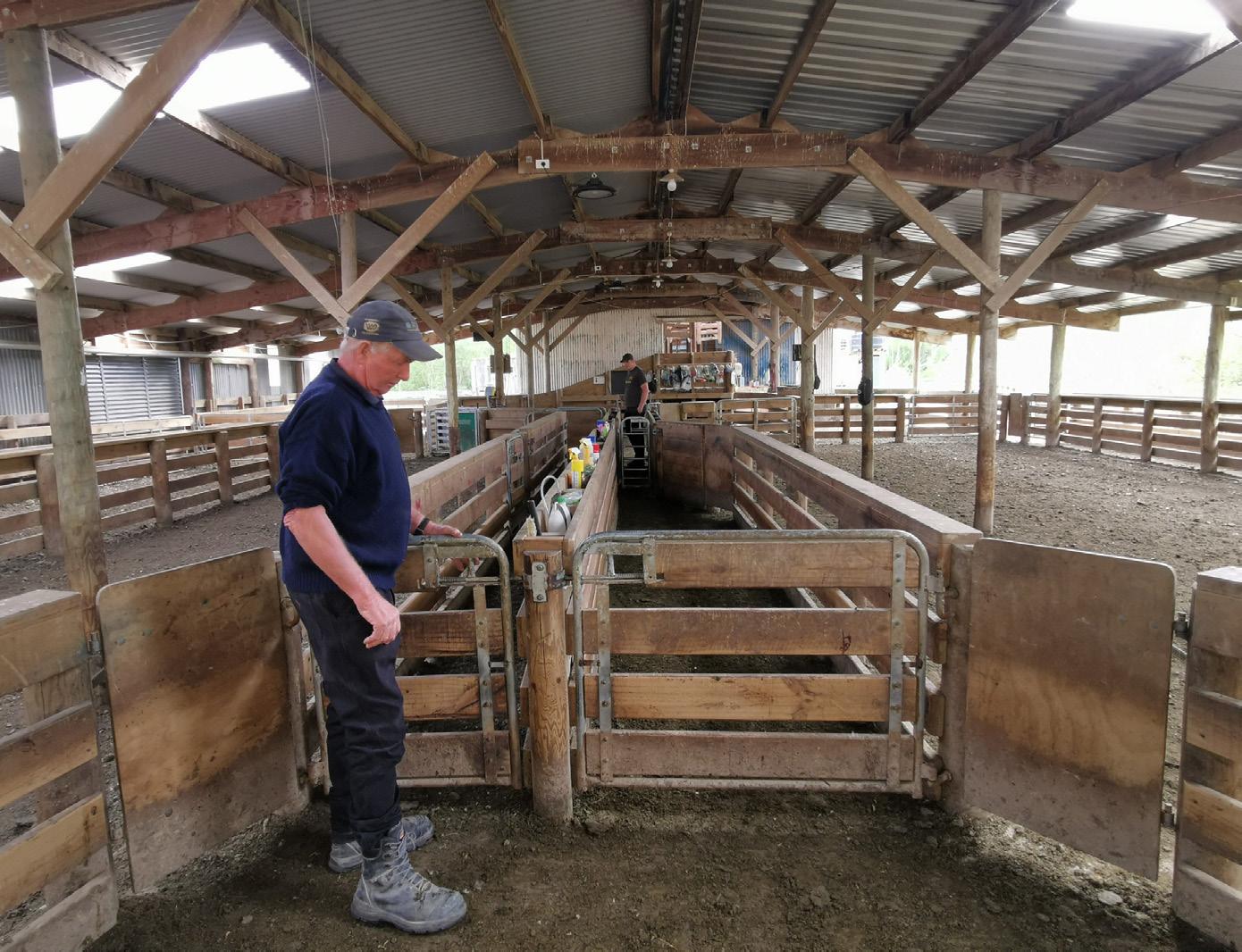
6 minute read
The master of the yards
There are those who have a well earnt reputation, whose clients will wait on your availability and book you in for next year as you are moving on from this year’s contract.
There are those who are recognized for certain aspects of our industry and excel. And there are those who work quietly away, with a wealth of knowledge that we as an industry should be wanting to learn from.
Advertisement
John Millar is one such fencer. To be honest a brief article such as this one does not begin to do justice to the intrinsic years of knowledge that John has, but here is an insight into his background.
John’s located down in the Wairarapa, not sure if John has ever had to advertise and he certainly has clients who will wait for their turn on the calendar. One of John’s strengths, other than years on the fence line and years’ operating bulldozers on some pretty mean country, is his stockyards. He lives in an area with large stock units and has developed a reputation for building them.
John, like many of you is self-taught, his father Snow was a farm manager and John would help with the stockwork and ride a horse out after school to help contractors. A shearer as well, when he left school he spent time shearing in the works in Norway and the UK. Going out on his own at about 18 years old with a A55 ute, spade and mate posthole borer John went on to work 50/50 with Harry Cottle, usually fencing after the spring lamb shearing had finished.
In the 1970s John got his first bulldozer (a Bristol Tauras) and put in fence lines and posted with a Donald’s post driver, during this time work had built up and John was lucky enough to have Colin Eastwood work with him for over 20 years. Having owned 4 bulldozers (still owns 2), John has also acquired a JCB, liking the independent hydraulic oil like a bulldozer.
John has built numerous cattle and sheep yards over the years, the largest sheep being at Pukeatua Station for 9,000 sheep with a holding pen roof cover of 100m x 80m. Cattle yards around the 300-400 head are some of his larger sets.

Building gates with roof cover behind
John designs from scratch. He has developed a feel for it over the years, watched how the animals move, especially watching animals being drafted, how people were working, what works, what does not. Cattle yards are simpler than sheep. Get to know the measurements required and expand the size requirements from there. Many of John’s clients leave the design completely up to him or go off yards he has built previously that they have seen.
John usually starts with figuring the site out and prioritising the load out area. He has a high regard for putting truckies in the right place and working from there. He likes to put a gate at the top of the race and an outside catwalk as part of a loading policy for the Driver access when loading the truck and for their safety. Ramp heights have changed over the years with today’s trucks having airbags so looking at 1 metre maximum. John likes to blank the race out with rubber panels, ensuring truckies cannot walk up above the cattle as it’s now illegal. As importantly blanking out the race encourages the cattle to look ahead and stop their feet going through the sides. Another aspect is do not face races towards the building, for drafting races in outside yards do not face them towards the morning sun, especially for sheep who react to shadows and bright light.

Angled raceway
The pictures of the older yards (overleaf) are of a set built five years ago in Alfredton. They are set up with features like spring loaded walk-through man gates, bifolding gates around the scales, rollers to help with sheep movements in the neck of the race, helps stop them wedging there, enabling one to pull back on the roller. The race leading up to the scales has one free swinging gate so they can pin it to the outside. The walls in the race also pivot off the top and can be pinned at the bottom in different space positions to accommodate stock size. There’s attention to working aspects that many of us have no concept of, that have been thoroughly thought out and developed over the years.

Alfredton yards Alfredton yards

Johns’ gates are made by Tower Gates in Carterton. John places sighter rails on both cattle and sheep gates, with sheep gates getting 4 rails. The top rail of the sheep gates wants to be right up against the top pipe, so dogs jumping over the gate do not get their leg caught up and break it. The gate at the end of the race is now vertical barred so sheep do not get their legs caught up when they hit it.
John notes the trend of steel becoming more widely used, but is generally not a fan of steel yards, feels wood is kinder on the stock and the noise created by the hole or slat left in the steel after galvanizing is not conducive to either stock or man.
Changes in yard design over the years reflect changes in the stock themselves. Cattle tend to be quieter and yard size smaller than they used to be, they used to have huge holding pens. Height has reduced as well with heights ranging from 1500 to 1800mm.
Years ago, when wool prices were high sheep were bred along the lines of being ‘wool blind’, so yard height was 800mm, but with today’s cleaner faced sheep the height is 1000mm and 1100mm on the outside. Woolsheds have become smaller with more covered roofs over sheep yards, allowing the same number of sheep as the shearing sheds with pens under the woolsheds.
The set of unfinished yards in the photos – are for 4,000 head of sheep, the station buys in 10-11,000 store lambs per year. It has a covered roof area 39 x 20 metres, and over 50 gates in the yards. John built these almost single handedly, including the roof cover, with some short periods of help from the client’s son Matthew who was on farm from overseas. Peter the landowner and Tim McKay helped to drill the holes for the pole work. Using the Tractor with a safety crate on the front end loader John and Matthew got the roof up and did the concreting themselves. John also installed the Weighing crate, dipping area, dagging machine/ handler.
John has helped many young fencers get a head start in the industry. However it is a sad fact of our industry that this caliber of fencer in recent years has had problems finding reliable workers, with the wider concern is that the learning path from a fencer such as this might well get lost to the industry.
Written by Debbie White

Verticle bars at the end of the race prevent sheep legs getting caught up










